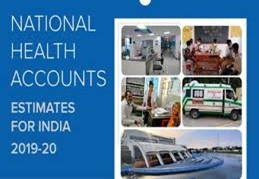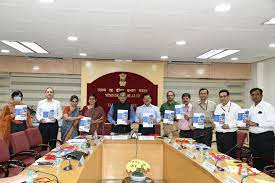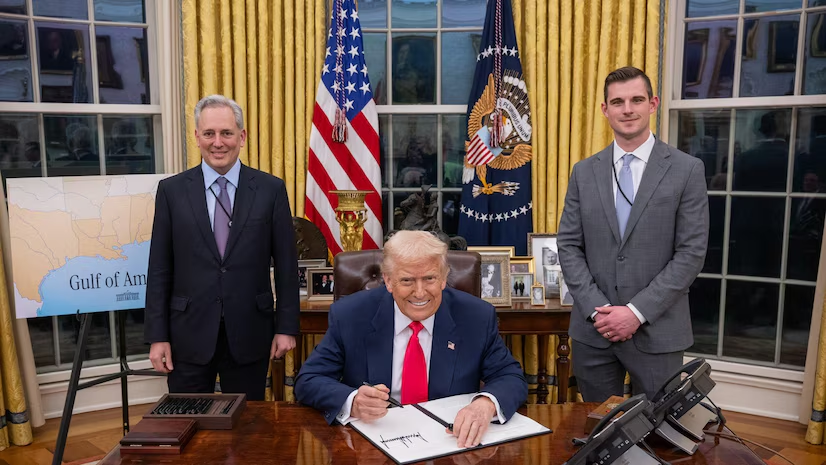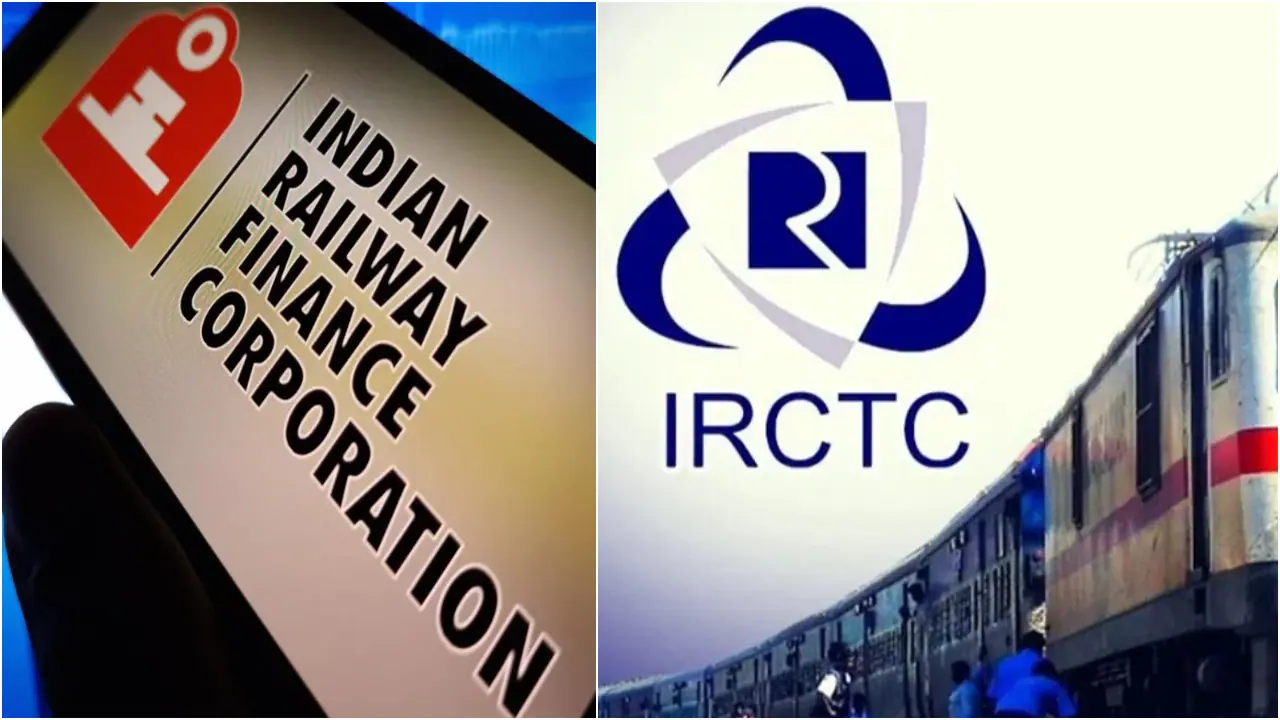- Courses
- GS Full Course 1 Year
- GS Full Course 2 Year
- GS Full Course 3 Year
- GS Full Course Till Selection
- CSAT
- 5 LAYERED ARJUNA Mentorship
- Public Administration Optional
- Online Program
- GS Recorded Course
- NCERT Batch
- Polity Module Course
- Geography Module Course
- Economy Module Course
- AMAC Module Course
- Modern India, Post Independence & World History Module Course
- Environment Module Course
- Governance Module Course
- Science & Tech. Module Course
- International Relations and Internal Security Module Course
- Disaster Management Module Course
- Ethics Module Course
- Essay Module Course
- Current Affairs Module Course
- ABOUT US
- OUR TOPPERS
- TEST SERIES
- FREE STUDY MATERIAL
- VIDEOS
- CONTACT US
National Health Accounts Estimates
National Health Accounts Estimates


Latest Context
Recently, the Ministry of Health and Family Welfare issued the 7th National Health Accounts (NHA) Estimates for Indi a (2019-20) that was produced by the National Health Systems Resource Centre. The NHA estimates are prepared by using an accounting framework based on the internationally accepted System of Health Accounts 2011 of the World Health Organization (WHO).
a (2019-20) that was produced by the National Health Systems Resource Centre. The NHA estimates are prepared by using an accounting framework based on the internationally accepted System of Health Accounts 2011 of the World Health Organization (WHO).
National Health Systems Resource Centre (NHSRC)
- Establishment Year: It was established by the Government of India to serve as an apex body for technical assistance in 2006-07 under the National Rural Health Mission (NRHM).
- Mandate: The mandate of NHSRC is to support policy and strategy development with a provision and mobilization of technical assistance to the states and capacity building for the Ministry of Health and Family Welfare (MoHFW).
Key Highlights
|
Health Indicators |
Definitions |
Growth Trends |
|
Out-of-Pocket Expenditure (OOPE) |
It is the money paid by the households at the point of receiving health care. It needs to be paid by an individual when services are provided to him neither through the government facility nor the individual comes under any public or private insurance or social protection scheme. |
The share of OOPE in total health expenditure has declined to 47.1% in 2019-20 from 62.6% in 2014-15 |
|
Government Health Expenditure (GHE) |
GHE indicates spending under all schemes funded and managed by Union, State, and Local Governments including quasi-governmental organizations and donors when funds are channelled through Governmental organizations |
The share of GHE in the country’s total GDP increased to 1.35% (2019-20) from 1.13% (2014-15). |
|
General Government Expenditure (GGE) |
It is a proportion of the share of Governmental expenditures for healthcare in the General Government Expenditures that indicates the Government’s priority towards healthcare. |
In GGE the proportion of health sector spending has steadily increased from 3.94% to 5.02% between 2014-15 and 2019-20. |
|
Total Health Expenditure (THE) |
THE constitutes current and capital expenditures incurred by Government and Private Sources including External funds. |
In the Total Health Expenditure (THE) of the country between 2014-15 and 2019-20, the share of GHE has increased from 29% to 41.4%. |
|
Social Security Expenditure (SSE) |
It comprises government-funded health insurance, medical reimbursement to government employees, and social health insurance programs. |
The share of SSE on health has increased from 5.7% in 2014-15 to 9.3% in 2019-20. |
|
Private Health Insurance Expenditures (PHIE) |
PHIE constitutes spending through health insurance companies where households or employers pay a premium to be covered under a specific health plan. |
PHIE has increased from 3.4 % in 2013-14 to 7 % in 2019-20 estimates out of total Health Expenditure. |
|
External/ Donor Funding for health |
This constitutes all funding available to the country by assistance from donors. |
It has increased from 0.3 % in 2013-14 to 0.5 % in 2019-20 out of total health expenditure. |
Way Forward
-
Increase in Health Spending: The state governments should increase their healthcare spending as a percentage of their total budget to about 8% which is currently 4-5% for many states, Furthermore, this spending must be aligned with the bigger picture of benefiting the citizens.
-
More Emphasis on Primary Expenditure: To lay more emphasis on enhancing the effectiveness of the health sector, it is important to persist with this trend of expenditure on primary healthcare so that promotive and preventive health issues that take place at the primary level can be focused.
-
Speedy Implementation of the Fifteenth Finance Commission Report: The Fifteenth Finance Commission recommends that the public health expenditure of the Union and States should be increased together to reach 2.5% of GDP (Growth Domestic Product) by 2025.
-
Increasing the Coverage of Social and Private Health Insurance: Currently, 20% of the population has social and private health insurance while the remaining 30% known as the "missing middle," have no health insurance. Therefore, there is a dire need to increase the coverage of these schemes.
Other Initiatives Related to Healthcare
-
National Health Mission
-
Ayushman Bharat.
-
Pradhan Mantri Jan Arogya Yojana (AB-PMJAY).
-
National Medical Commission
-
PM National Dialysis Program.
-
Janani Shishu Suraksha Karyakram (JSSK).
-
Rashtriya Bal Swasthya Karyakram (RBSK).



